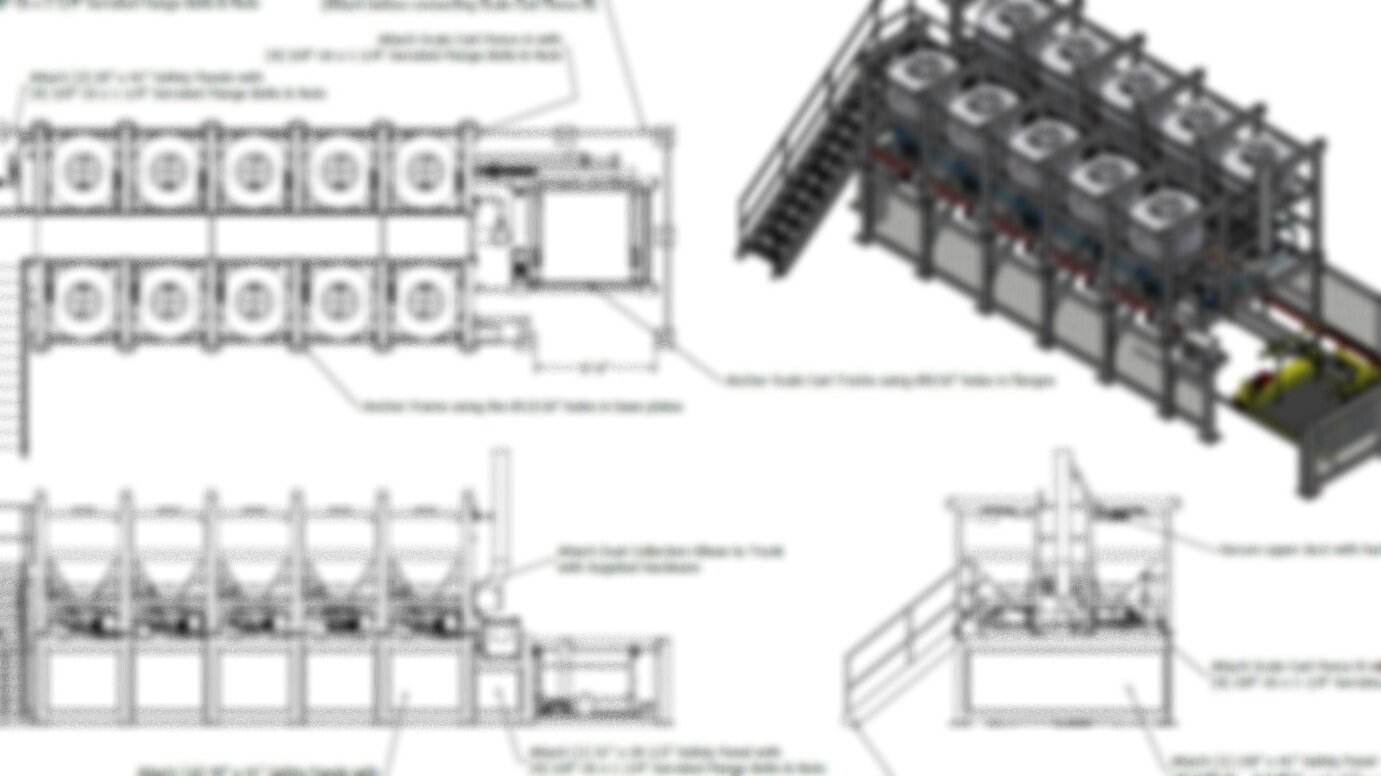
Case Study:
Biosphere
Turnkey Automated Batching System Helps Company Reach Sustainability Goals
Biosphere Industries was founded in 2002. Its mission, according to founder Elie Helou Jr., is reflected in its name. “Biosphere sought to provide closed-loop food packaging systems that have minimal to no impact on the earth’s natural life cycles,” he explains. “Using yearly renewable raw materials, and ultra-efficient (essentially no-waste) manufacturing processes, we wanted to deliver truly earth-friendly solutions.”
Helou is an aeronautical engineer and a recognized expert in composites technology. A major priority was using yearly grown raw materials that would have minimal impact on the environment. Other priorities related to defining the material. “We wanted to create a material that was primarily starch-based,” he explains. “Tapioca was chosen due to it allergen- free nature — some people are allergic to other starches, such as potato. We wanted it to be harvestable without killing the plant, so the supply would be annually renewable. We wanted it to be rigid, too — and have insulating properties so it could be a replacement for EPS or Styrofoam.”
Five years into the development effort, Biosphere introduced an entirely new technology, in terms of both its composition and its process, for sustainable single-use food packaging that met all of these requirements — and more. Now marketed under the trade names Biosphere Bakeware and Blueware Serveware, it is unique in its approach: Rather than convert starch into plastic, the Biosphere process “bakes” the starch in a process similar to the baking of bread or muffins (ironically, two of the product categories that benefit most from the technology — more on that later.)
Ingredients in Biosphere’s unique “platform” technology include tapioca starch as the primary ingredient and a lesser amount of grass fibers and additives custom to each recipe that add strength, flexibility or color. The most critical aspect of the manufacturing process is ingredient batching, which must be highly accurate.
“The accuracy requirement was the spec most off- putting for vendors when we looked for a system,” offers Helou. “Our goal was to combine high output, which we expected to accelerate over time, with ingredient accuracy that would never deviate more than 0.5 percent.” Helou and his engineering team interviewed several candidate vendors and, on the basis of speed, repeatability, lead time for completion and cost, selected a turnkey automated batching system engineered and manufactured by Ingredient Masters Inc. of Cincinnati, Ohio.
The Equipment
The first of the five modules is a super sack bulk handling system comprised of six 54 cu. ft. dispensing hoppers arranged in a single row. Each is equipped with pneumatic slide gate valves with dual dribble positions to optimize cycle times and discharge accuracy. Air-activated vibration at each hopper is controlled by a PLC to ensure consistent product flow. A robotic scale cart, also governed by the PLC, moves under the dispensing hoppers and receives the precise amount of each ingredient specified in the recipe. The scale cart automatically docks with a transfer hopper to transport the ingredients. There are computer-controlled dust collection points at each of the five hopper discharge sites; dust collection can also be activated manually during hopper refilling.
The second module, a vacuum transfer system, is controlled by the central computer system. It automatically requests delivery of the next sequence of material whenever a premix hopper is empty. It has a primary premix hopper mounted over the mixer that discharges through the mixer port, and a secondary premix hopper that discharges into the primary. A vacuum receiver mounted above the secondary hopper transports ingredients sequentially from the scale cart transfer hopper into the secondary premix hopper.
Module 3 is a fiber handling system with a mechanically agitated hopper mounted on load cells. It functions as a “loss in weight” scale hopper and can also be filled from an existing fiber shredder discharge conveyor.
System control is provided by an Allen Bradley Compact Logix PLC running RSLogic 5000 for the PLC logic and RS view for operator graphics. A Dell Pentium computer runs Windows XP and RSLix provides PC to PC communication. A Microsoft access database stores recipe and ingredient information and records batch data.
The Process
Powdered raw material (there is also a liquid component) for both Biosphere product lines is received in 650 kg to 1000 kg “super sacks,” and subjected to full lab inspection using commercial bakery standards. Super sacks are installed on racks using a fork lift and frame, and contents are released into hoppers. When an order is received, the operator creates a job order containing the recipe information, number of batches to be run, and batch size. The computer confirms the availability of each dry ingredient and sends the job order information to the PLC. While the previous batch is mixing, the operator places a mixer bowl under the discharge of the first (fiber) hopper and initiates batching.
When all starting conditions (equipment positions, material availability) are met, a robotic cart moves to the station containing the filler and receives the discharge specified in the recipe. Ingredients are metered to a gain-in-weight type weigh scale — the type most often used in food and pharma processing due to its higher accuracy and more manageable sanitation routine. When discharge is complete, the scale cart docks with the transfer hopper and sends the filler to the receiving hopper above the mixer, then through the secondary premix hopper, to the primary. The PLC then discharges the filler and meters liquid #1 into the mixer.
Following fiber transfer, the cart moves to the starch hopper, then on to the remaining ingredients — some of which are as fine as powdered sugar — with scent and colorant (if specified) as the final additions. When each batch is complete, the system displays the recipe amount for each ingredient, along with actual amount discharged. The system is distinctive in that it supplies all of the required material to the mixer without delaying the mixing cycle.
The Ingredient Masters system maintains a deductive inventory of the material in each dispensing hopper. When a discharge is made, the PLC deducts the amount from the available weight in the hopper. When a hopper is refilled, the operator enters the weight of the bulk bag into the computer and the PLC adds the weight to the available weight for the hopper. The discharge accuracy of the system for a 540-lb. batch is shown on the chart. The Ingredient Masters system can produce one batch every seven minutes.
Biosphere’s material has proven ideal as bakeware. Muffin trays and pie pans are excellent applications, as are bakeware products with unique features, or deep draw requirements — the material will produce product with depths of 9-inches and greater.
The material has exceptional insulative properties, and adequate short-term moisture-resistant properties as well, so it’s a natural for ice cream. “Bakeware is where we started selling the technology,” says Helou, “because the material lets companies bake and sell in the same pan. The insulating properties are of great interest to the cold markets, such as smoothie and yogurt stores.”
The “yearly grown” 100 percent non-petroleum- based formula developed by Biosphere has proved well-suited to high volume production. At its Carpentaria, Calif.-development center, Biosphere has been able to test and fully develop this new technology. The company is evaluating sites for a second production facility in the Midwest.
“Our goal,” says Helou, “is to source locally and use locally. We want to put farmers to work here, growing starch, bamboo and other ingredients, and avoid importing anything from abroad.”
As seen in Processing Magazine February 2012.

